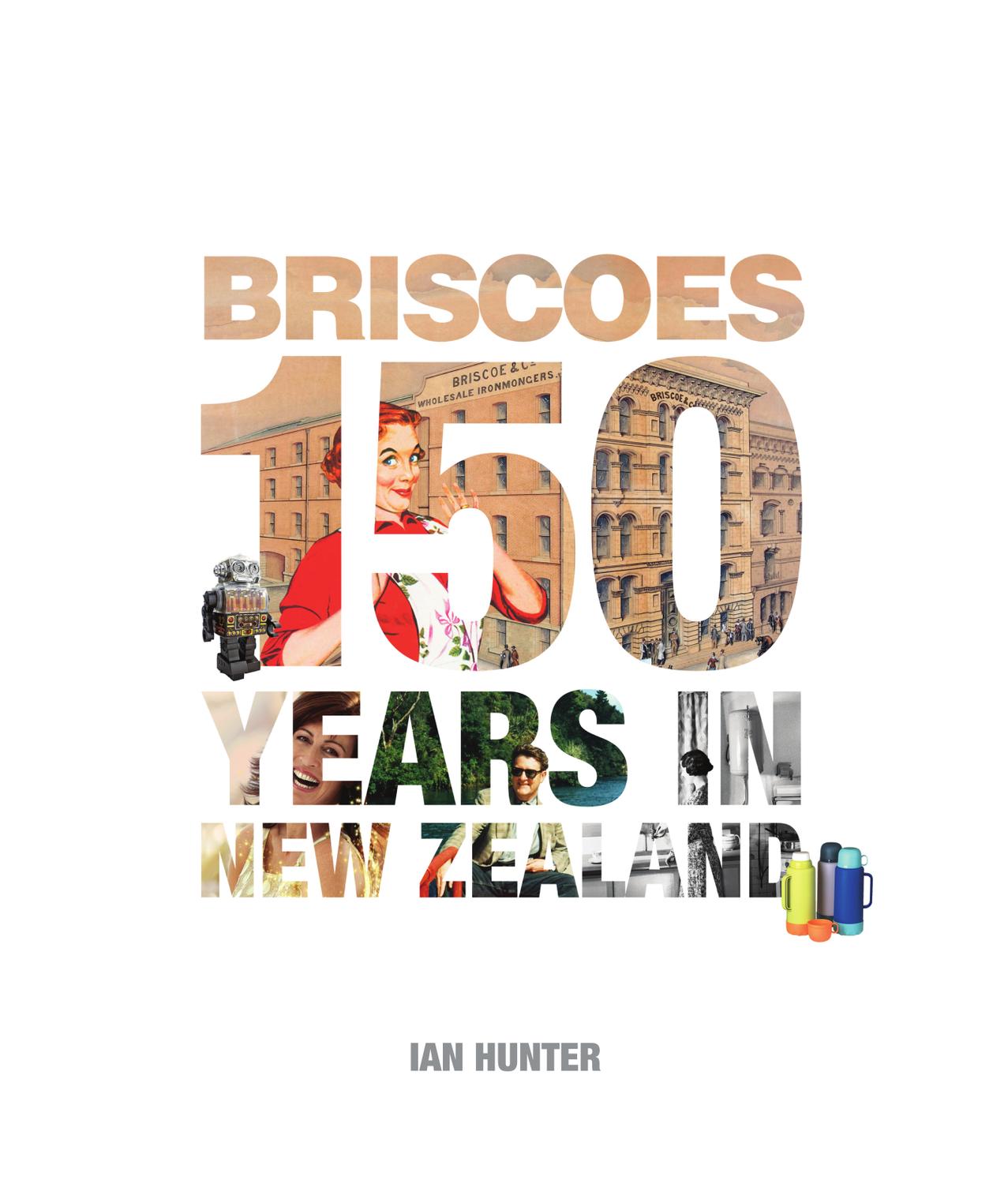
“You’ll never buy better” is the motto that has defined and underpinned the success and longevity of Briscoes, a Kiwi company that is celebrating 150 years of business.
To celebrate the milestone the book Briscoes: 150 Years in New Zealand documents the historical journey of the iconic retail store which started out as an 18th century British trading company, and began selling in Dunedin in 1862.
While the store is today well known for its homeware products, it began life as a hardware retailer supplying prospectors during the gold rush with shovels, picks, tents and lanterns in the early 1860s.
“Briscoes brought the best manufactured goods of the world to our shores and became the first international mercantile business to establish a presence here,” says author and business historian Dr Ian Hunter.
From those humble beginnings the company has grown to be the household name New Zealanders know today – thanks in part to distinctive advertisements with the familiar jingle – and now boasts 46 stores throughout the country.
Dr Hunter says Briscoes’ rapid expansion in its early days was tightly connected to the country’s own economic progress, as it became a major supplier of products for the building of New Zealand’s core infrastructure.
“The company was the national supplier for government contracts to construct bridges, railroads, stations, telegraph lines, water systems and tunnels, to name a few.”
But times were not always so good for the retailer. During the Depression of the 1930s, the business sustained its biggest financial loss in its history. There was even talk about closing down at the time. Instead, to survive, the company enforced a 10 percent pay cut, single staff were let go, and married staff assigned every other week off without pay.
“Wartime also had an effect on Briscoes’ bottom line with shipping disruptions, but the Second World War was vastly different from the First and the company managed to turn a modest profit by 1944,” says Hunter.
Fast forward to the 1980s, and the firm found itself in trouble again, caught halfway between the perception of being an outright wholesaler and a wannabe retailer as product ranges struggled between premium and bargain-basement goods.
The company was rescued by a ‘white knight’ in the person of Australian retail entrepreneur Rod Duke who took over the running of the business in 1988. Duke recognised that the company needed a major shake up and believed it would be highly profitable once again.
“My original contract had been for a maximum of three years to get the company out of trouble and to find a buyer. But the longer I stayed at Briscoes, the more potential I saw,” says Duke.
Under Duke’s leadership, Briscoes ditched popular sellers like toys, boats and building products to concentrate on a strategy that focused on becoming the leading retailer in homewares.
“Rod Duke was aiming for leadership, not followership,” says Dr Hunter.
Duke’s philosophy was simple, “you don’t want to be number three or number four in New Zealand selling particular categories. Unless you’re number one or two you’ll struggle to make money,” he says.
The 1990s signalled Briscoes’ repositioning, as Duke continued on a course to swap the chain’s industrial image for a more customer-friendly retail destination.
We continue to deliver results that outpace our competitors, with strong sales recorded in our core homeware and sporting goods categories.
Briscoes: 150 Years in New Zealand is on sale at Briscoes branches ($49.99 RRP, Hunter Publishing).



